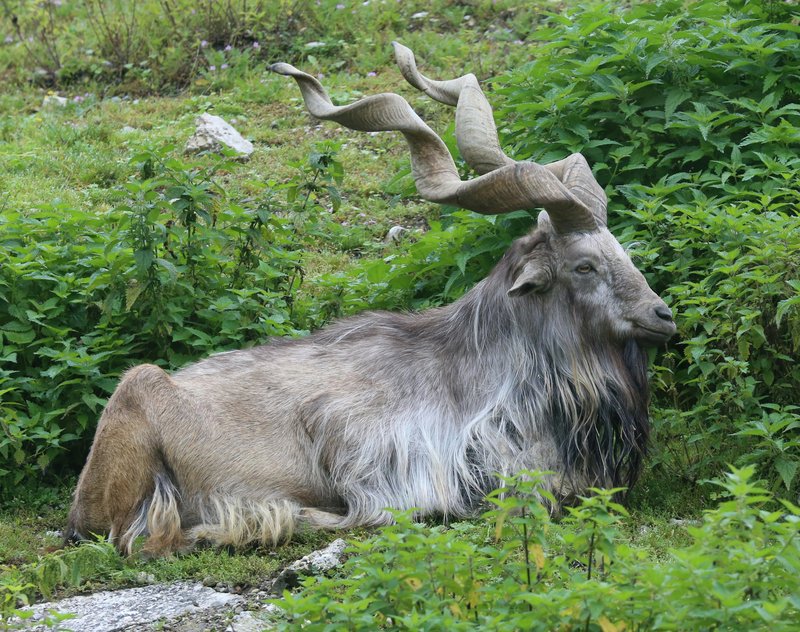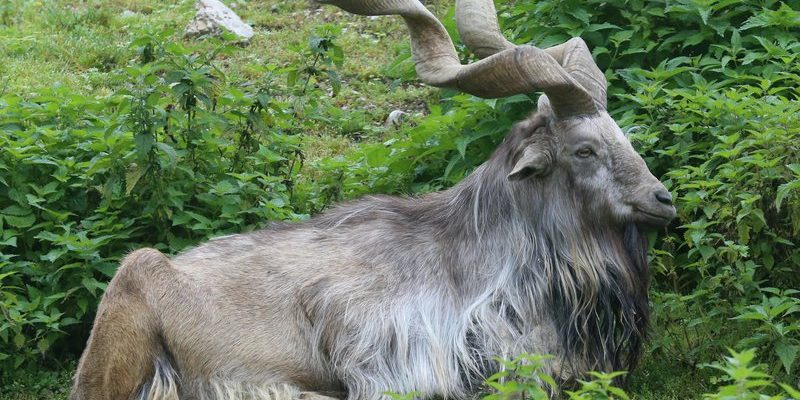
Imagine sipping a warm cup of tea while your friend shares stories of legendary beasts and symbolic creatures. The markhor comes up often, not just as a mere animal of the wild but as a symbol of strength and resilience. In many cultures, it’s intertwined with myths, traditions, and even the identity of entire communities. Let’s dive into how this magnificent creature is represented in different cultural narratives and folklore, and why it matters.
The Markhor in Folklore: A Symbol of Strength
In the folklore of regions like Pakistan and Afghanistan, the markhor often symbolizes strength and agility. Local legends describe how this animal navigates steep cliffs and rugged terrains with grace, almost like a dancer. This ability to thrive in challenging environments resonates deeply with people, embodying the struggle and perseverance inherent in their way of life.
Consider the story of a village facing a harsh winter with scarce resources. Legend tells that a markhor, in its wisdom, leads the villagers to hidden valleys where food and shelter can be found. Here’s the thing: this story isn’t just about survival—it’s about *trusting your instincts* and the bonds that form between humans and nature. Such narratives highlight the markhor as a beacon of hope, reminding people to remain resilient in the face of adversity.
Markhor as a Cultural Icon
Beyond individual stories, the markhor represents a type of cultural pride. In places like Pakistan, it’s the national animal. Its image adorns emblems, flags, and even currency, reinforcing a connection to the land and its enduring spirit. You might be wondering why this is significant. Well, every time someone sees the markhor, it stirs a sense of identity and belonging. It’s like wearing a badge of honor that reflects not just wildlife, but the people’s values and traditions.
Myths and Legends of the Markhor
Many myths have sprung up around the markhor, adding layers to its already rich narrative. For instance, some tales portray the markhor as a guardian spirit of the mountains, watching over travelers and keeping them safe from harm. Imagine trekking through a harsh landscape, feeling a sense of protection from an unseen force. That’s the essence of these stories—they give people comfort and connection to the vast wilderness.
Historically, hunters have revered the markhor, often incorporating it into their own tales of adventure. It’s common to hear stories about brave hunts where the markhor is both a challenge and a symbol of the hunter’s prowess. However, these tales also come with a moral—a reminder of the balance between man and nature. The thrill of the chase is intertwined with respect for the creature, as hunters often emerge with a newfound appreciation for life in the wild.
Markhor and Spiritual Significance
In various cultures, the markhor holds more than just symbolic strength; it also has spiritual significance. Among some communities, it’s believed that seeing a markhor in the wild is a sign of good fortune. People interpret such sightings as blessings, a way for the universe to communicate hope and prosperity.
Moreover, rituals honoring the markhor are not uncommon. Some tribal groups perform ceremonies that celebrate this majestic animal, expressing gratitude for its presence in their lives. Through dance, songs, and storytelling, they weave the markhor’s essence into their communal fabric, ensuring that its legacy continues for generations.
The Environmental Impact of the Markhor
The markhor isn’t just a creature of folklore; it plays a vital role in its ecosystem. As a herbivore, it helps maintain vegetation balance in mountainous regions, preventing overgrowth and supporting a diverse habitat. You might be surprised by how an animal so graceful can contribute significantly to its environment.
Here’s an interesting fact: conservation efforts aimed at protecting the markhor have led to community involvement in wildlife protection. When people value the markhor for its cultural and ecological significance, they often take active steps to preserve its habitat. This, in turn, boosts biodiversity and fosters sustainable practices within communities.
Efforts to Protect the Markhor
Conservation groups are working tirelessly to ensure the markhor thrives in its natural habitat. By educating local communities about the importance of this animal, they create a sense of stewardship. Honestly, it’s inspiring to see how people have rallied around the markhor, recognizing its place in both culture and ecology.
Organizations often engage local youth in conservation activities, fostering a new generation of environmental stewards. These initiatives not only help protect the markhor but also instill a deeper appreciation for the natural world and its stories.
The Markhor in Art and Literature
The markhor has also made its way into the artistic world. In paintings, sculptures, and literature, this remarkable animal symbolizes various themes, from the spirit of adventure to the beauty of nature. Artists often depict the markhor in motion, showcasing its agility and grace. These representations often evoke feelings of awe and reverence for the natural world.
In literature, the markhor appears as a character or motif, symbolizing resilience or transformation. Authors and poets weave tales that incorporate the markhor, emphasizing its role in myths and personal journeys. You might find that these stories resonate with universal themes of struggle, strength, and the quest for identity.
Modern Interpretations of the Markhor
Contemporary artists and writers are reinterpreting the markhor, blending traditional narratives with modern perspectives. This evolution keeps the markhor relevant in today’s culture, encouraging new conversations about conservation, identity, and the interconnectedness of life. It’s amazing how even an animal can reflect the changing tides of human thought and creativity.
The markhor is more than just a wild goat; it’s a significant part of folklore and culture across various regions. With its striking presence, rich myths, and symbolic importance, it represents strength, resilience, and a connection to nature that many cultures cherish.
As we explore the stories, art, and environmental significance linked to the markhor, we also discover important lessons about respect for wildlife and the environment. Protecting the markhor isn’t just about conserving an animal; it’s about preserving a piece of our shared humanity and history. So, the next time you hear about the markhor, remember it’s not just a creature of beauty—it’s a symbol of hope and resilience that resonates deeply within the hearts of many.

